Try this ancient and fragrant technique for preserving eggs and enjoy one of the tastiest snacks around!
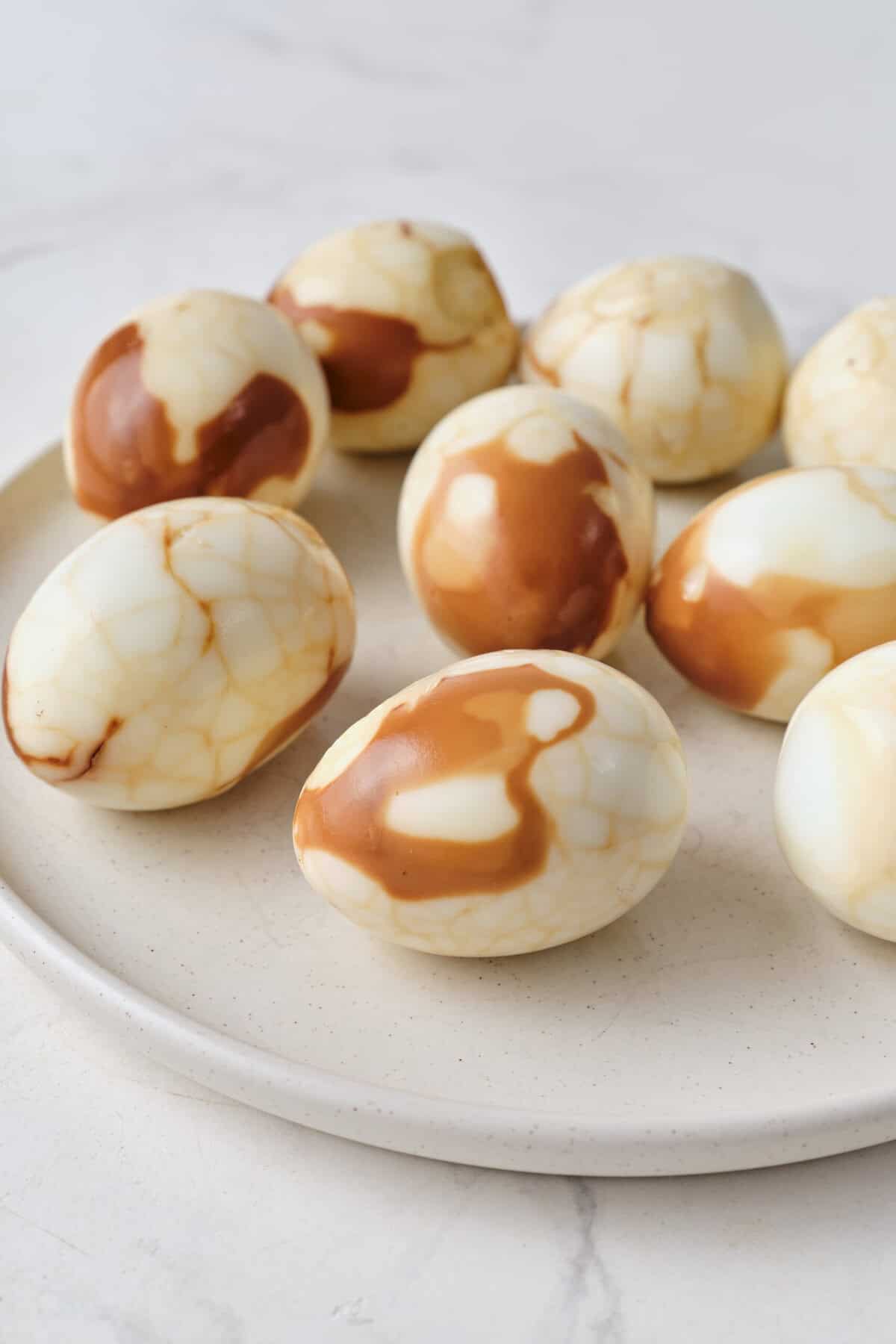
Are you in search of a protein-packed snack that overflows with flavor and looks amazing? Then look no further! These Chinese tea eggs, which were originally developed in the Zhejiang province, can take any tea party to the next level.
If you’ve ever wondered how many spices you can stuff into an egg, this recipe is a great place to start. It features a warm, tantalizing mix of ginger, star anise, cinnamon, Sichuan peppercorns, and bay leaves, alongside black tea, and an aromatic hint of rice wine that makes the tongue tingle. Who knew that marinating hard-boiled eggs in spiced tea could be so delectable?
While Chinese tea eggs may not be as well-known in the West, this recipe can transport their traditional flavor into your home kitchen. Transform your hard-boiled eggs into a bold, beautiful dish that looks like polished marble and tastes divine. The unique harmony of sweet, savory, and spicy flavors is sure to make this dish a big hit.
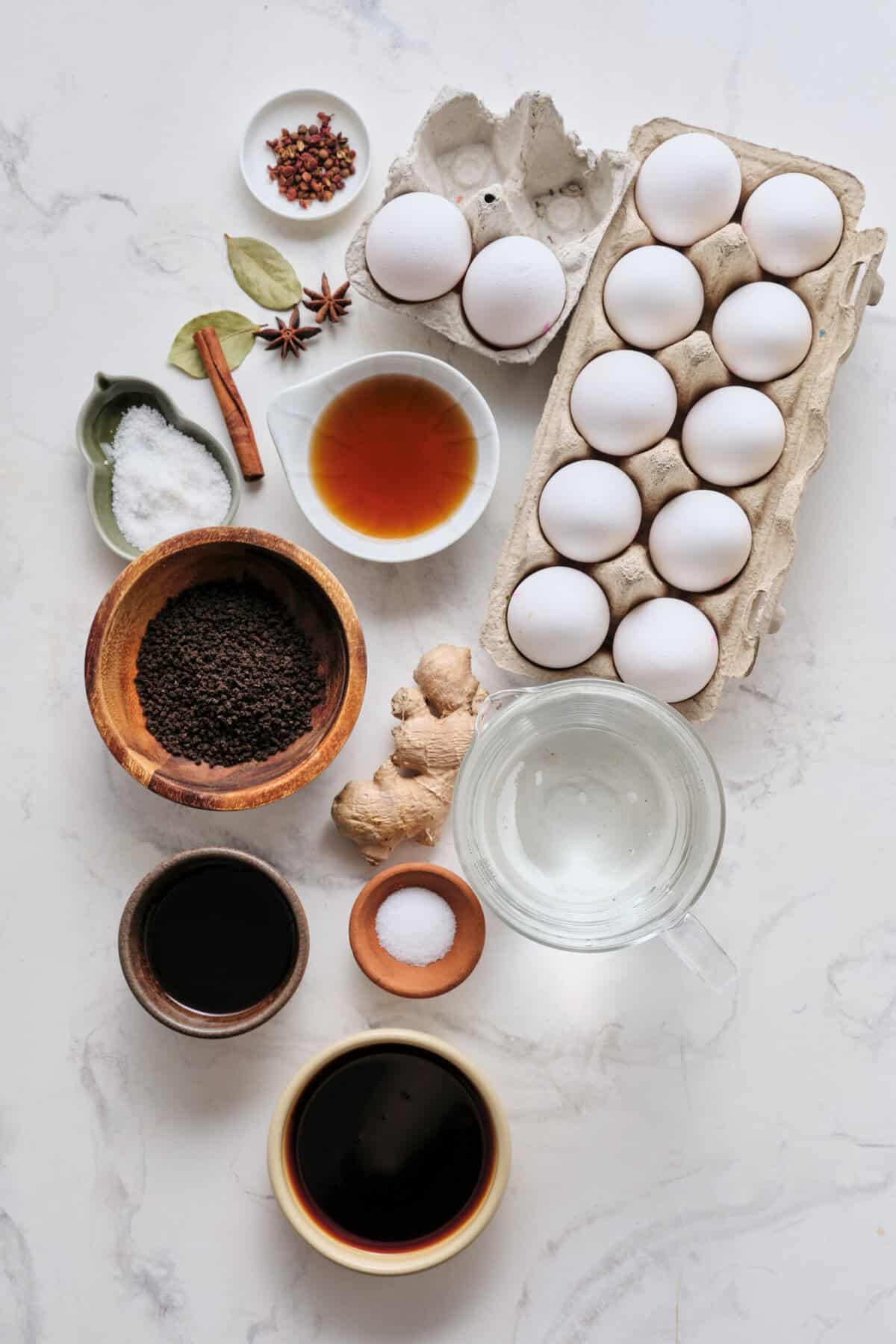
Are Chinese Tea Eggs Healthy?
While this dish boasts plenty of protein and healthy fats, it also contains higher levels of sodium. For anyone looking to cut back on the salt, you can opt for low-sodium soy sauce. And for individuals with gluten intolerance or sensitivity, use gluten-free soy sauce or coconut aminos in place of standard soy sauce, and dry sherry in place of Shaoxing wine. These tea eggs are easy to customize for a range of dietary needs, and they are an excellent option for vegetarian diners.
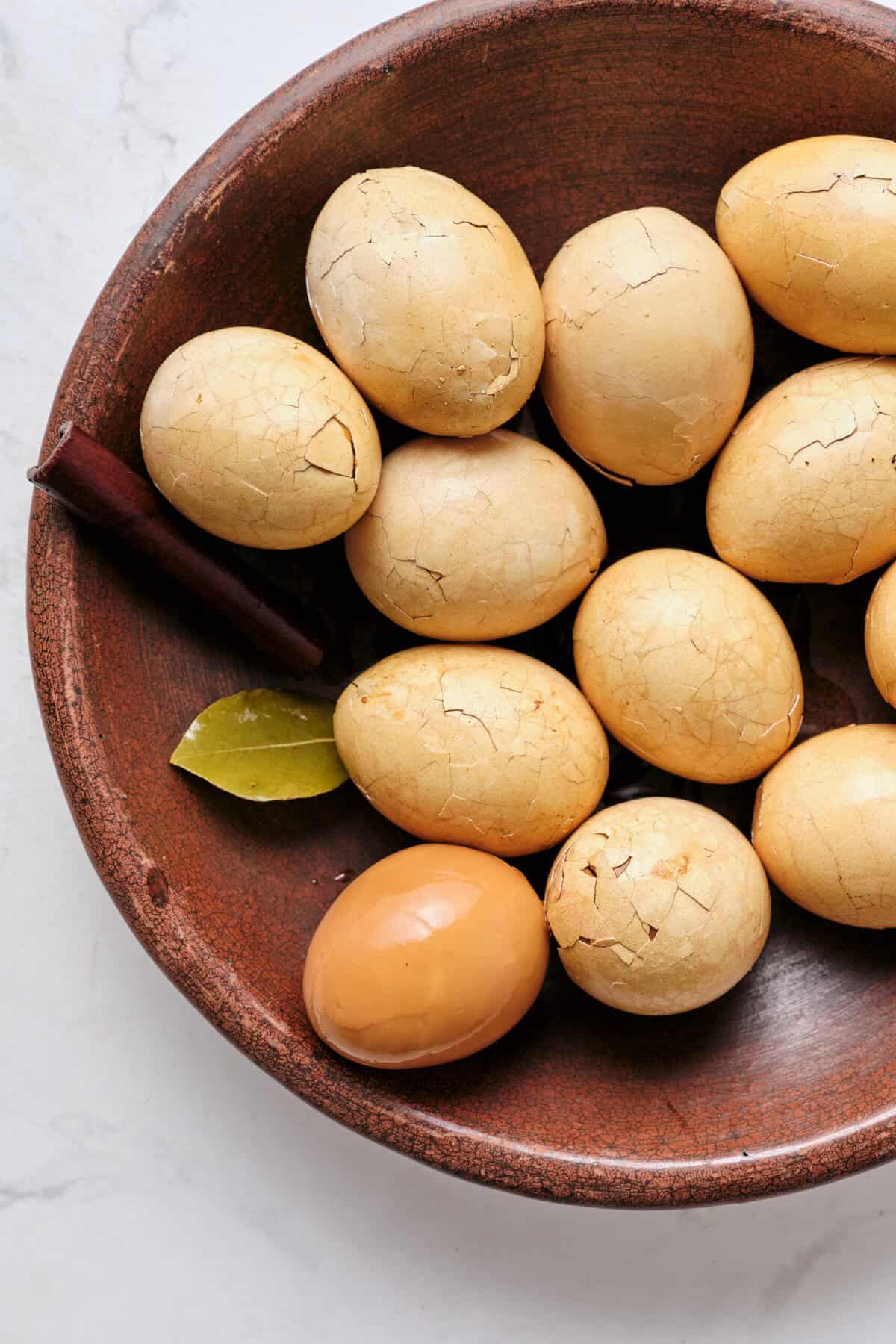
Tea Egg Variations Across Asia
While the tasty tea egg originated in China, its popularity has gradually spread throughout Asia, with different regions creating their own special version. In Indonesia, it’s known as telur pindang, and instead of using tea leaves, guava leaves, shallot skins, or teak leaves can be used, alongside the soy sauce and salt. Similar recipes can also be found in Malaysia, while the Japanese have a similar dish called shoyu tamago or Soy Sauce Eggs, which generally only uses soy sauce, occasionally with garlic and ginger, too.

How Do I Store Leftovers?
Once cooled and peeled, you can store your Chinese tea eggs in an airtight container in the fridge for up to 1 week. While I don’t recommend freezing the eggs themselves, you can freeze the broth separately to save it for a future batch of tea eggs. When frozen on its own, the broth can last for up to 3 months.
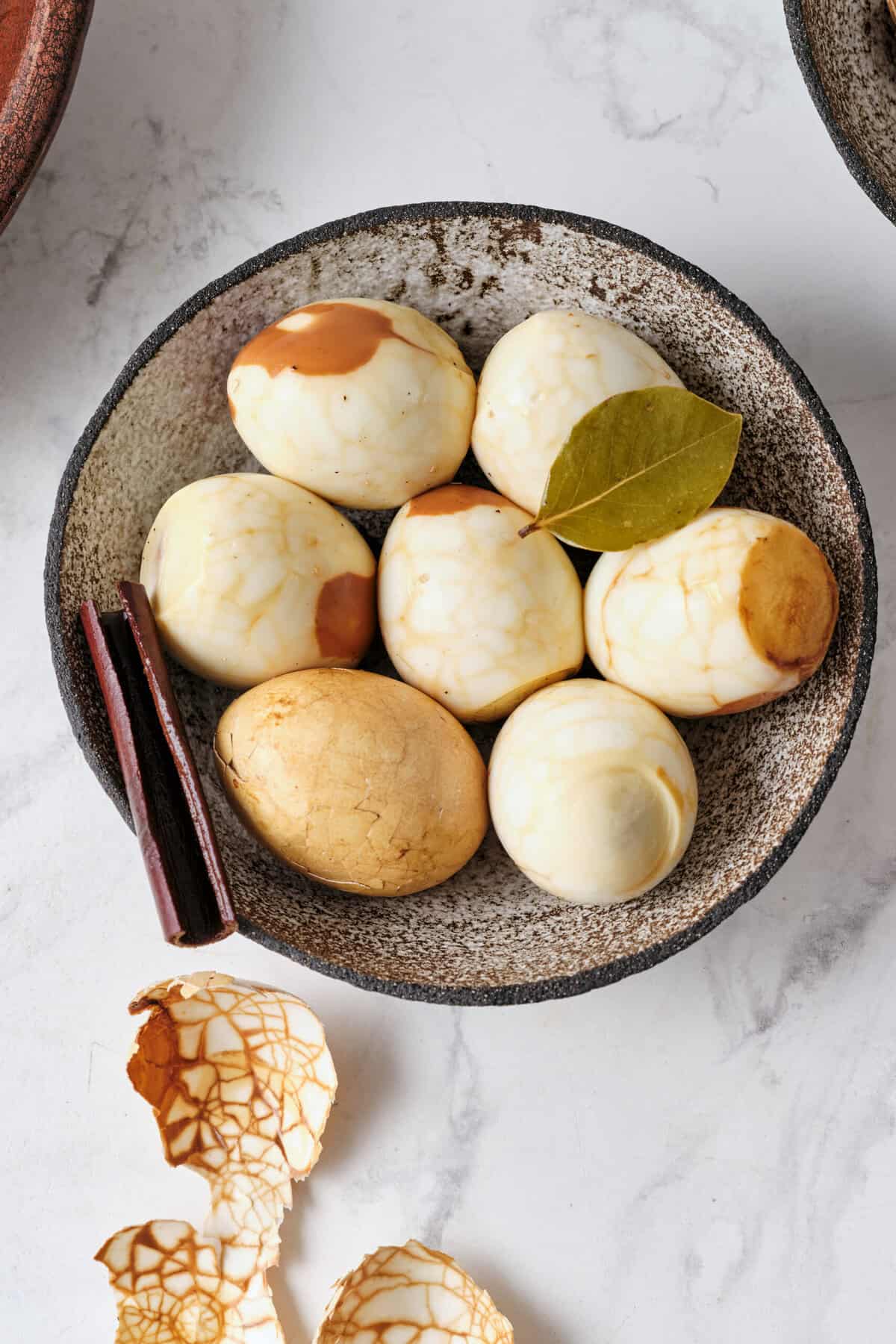
Serving Suggestions
If you’re looking for a quick snack, you can certainly eat a Chinese tea egg on its own. If you’d prefer to expand this dish into a bigger meal, try pairing it with Cabbage and Noodles, Quinoa Fried Rice, Asian Ramen Slaw, Roasted Broccoli and Carrots, or Avocado Egg Rolls. No matter what time of day you choose to enjoy this dish, there are plenty of ways to incorporate Chinese tea eggs into your meals.
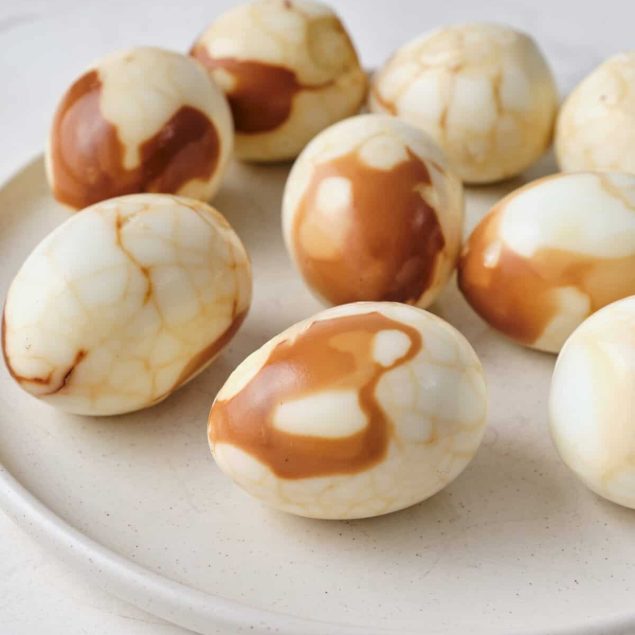
Ingredients
- 2 slices fresh ginger
- 2 whole star anise
- 1 cinnamon stick
- 2 bay leaves
- 2 tablespoons loose black tea leaves
- 3/4 teaspoon Sichuan peppercorns
- 3 tablespoons light soy sauce
- 1 1/2 tablespoons dark soy sauce
- 1 teaspoon sugar
- 1 1/2 teaspoons salt
- 2 tablespoons Shaoxing rice wine
- 4 1/2 cups water or enough to completely cover the eggs
- 12 large eggs at room temperature
Instructions
- In a medium pot, combine ginger, star anise, cinnamon stick, bay leaves, black tea leaves, Sichuan peppercorns, the soy sauces, sugar, salt, Shaoxing rice wine, and water.
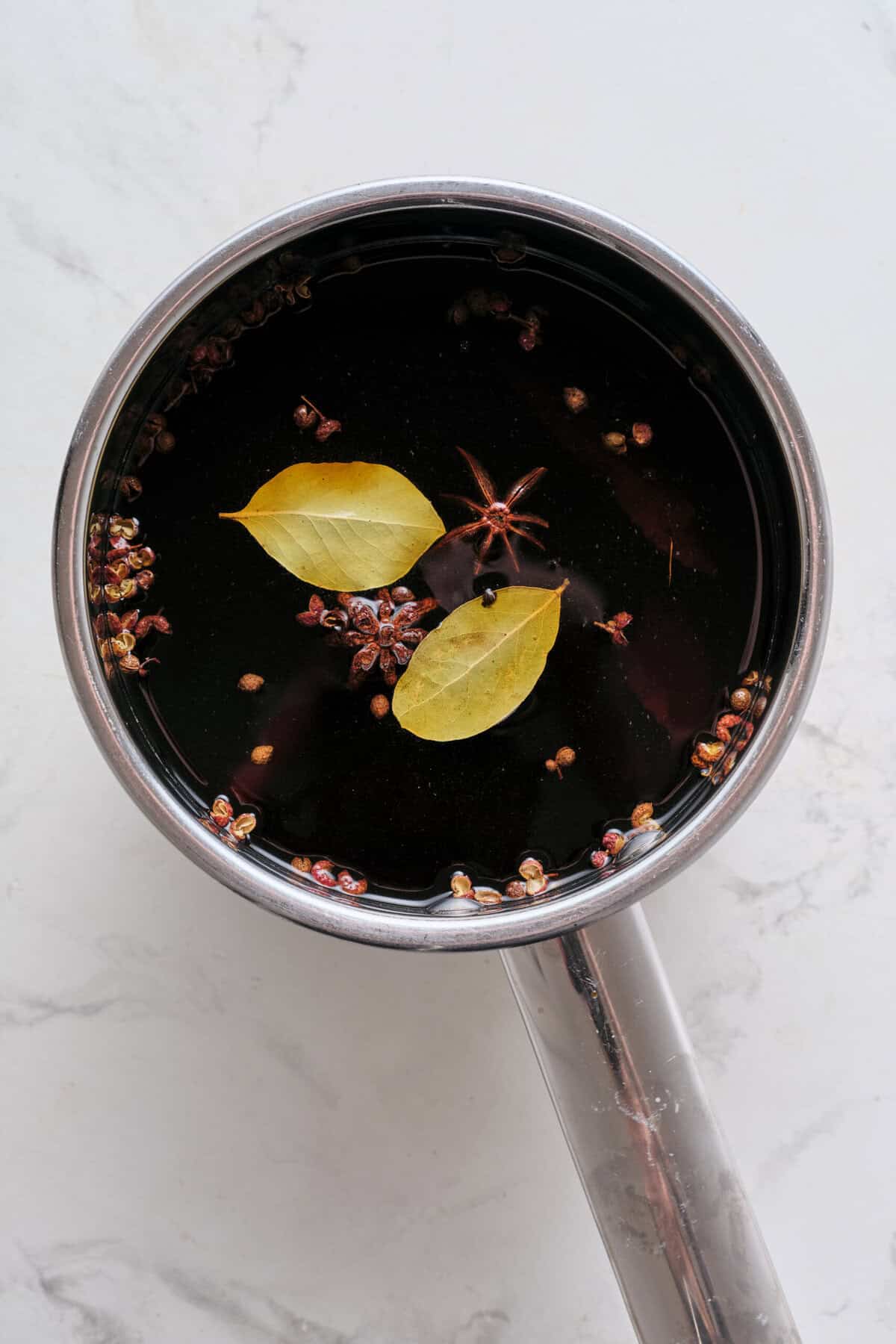
- Boil, then simmer for 10 minutes. Cool marinade completely after removing from heat.
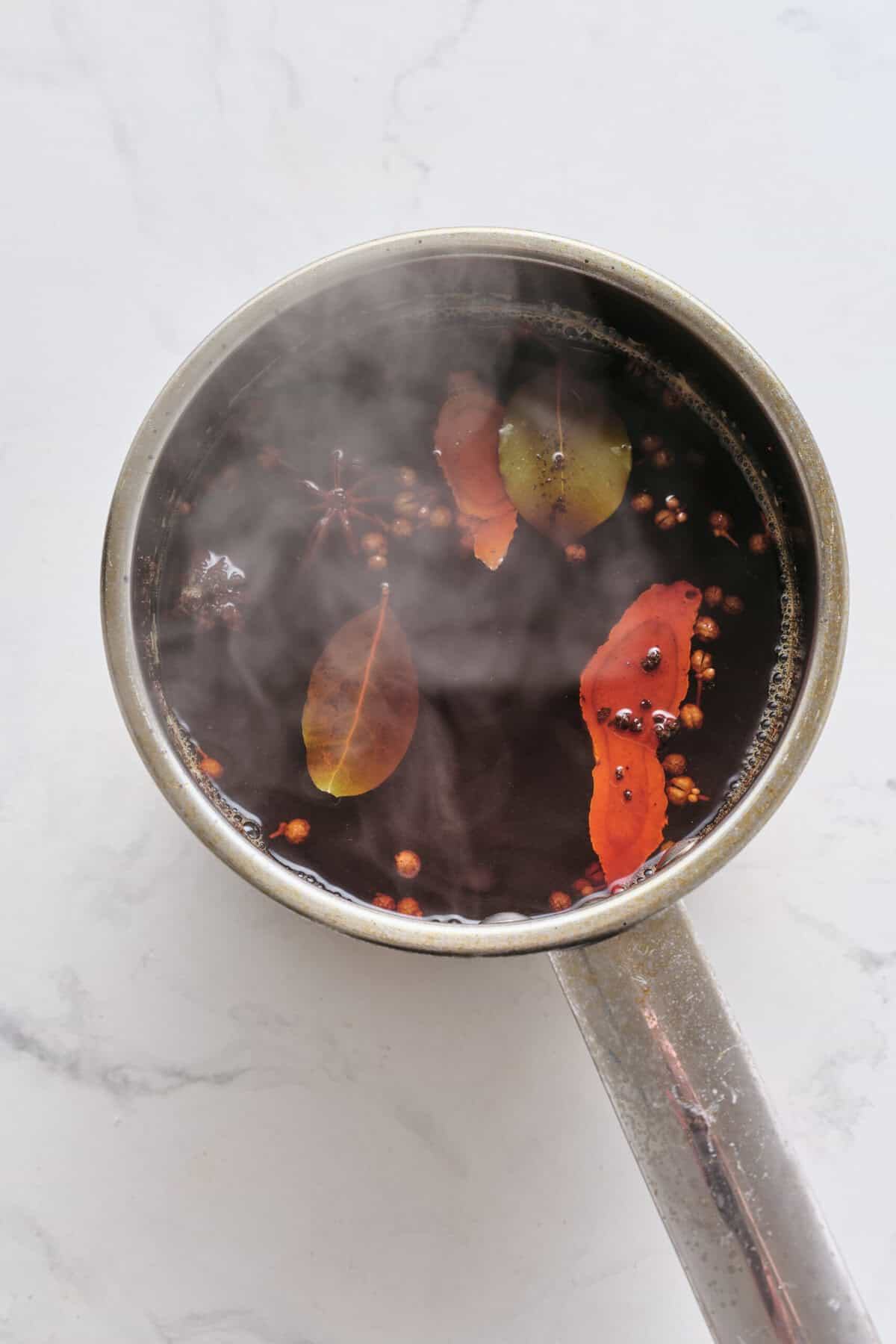
- Fill another pot with water, then bring it to a boil. Gently lower in room temperature eggs, avoiding cracking them.
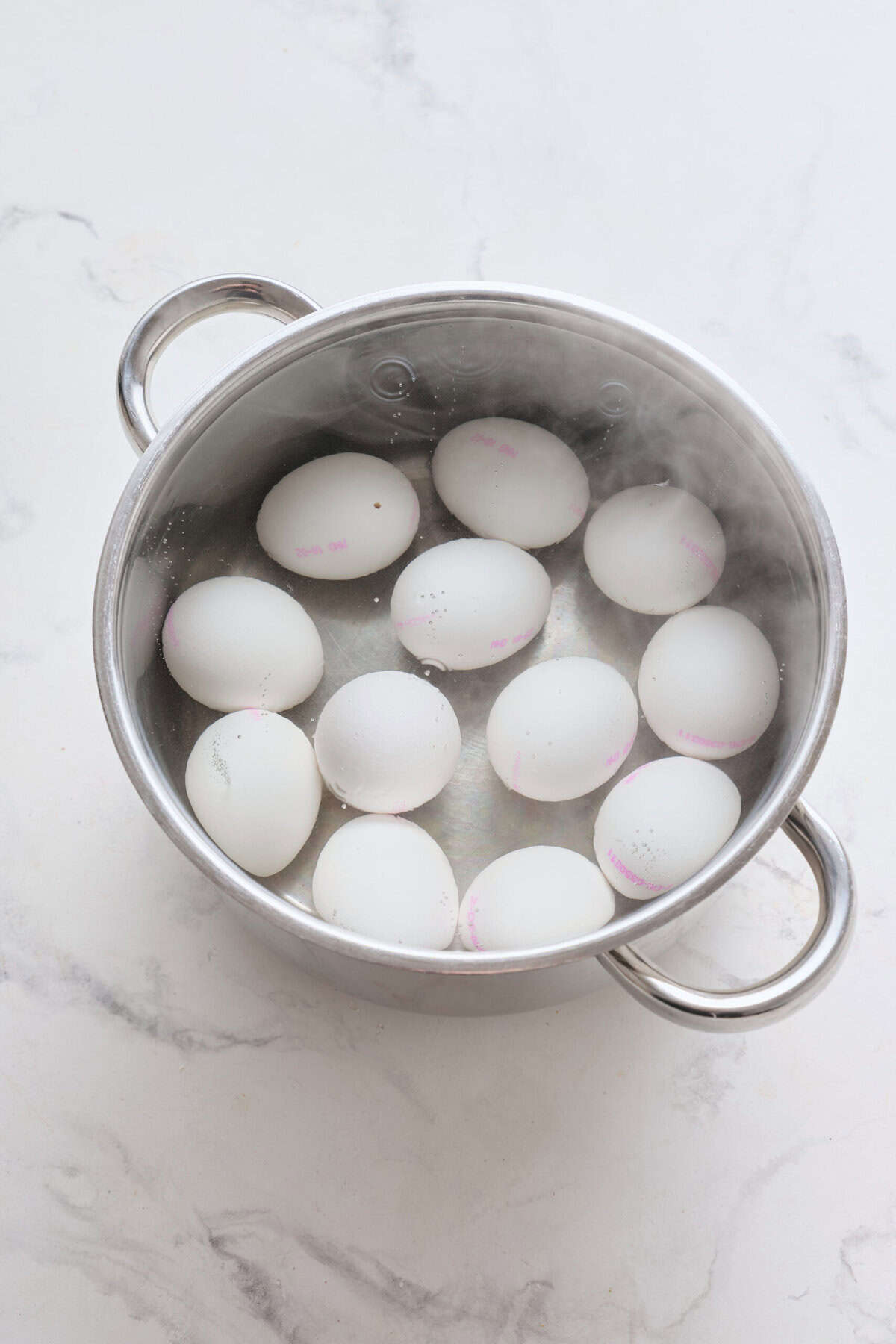
- Boil eggs for 7 minutes, then transfer to an ice bath to stop cooking. Once cool, tap each egg with a spoon to crack the shell without peeling.
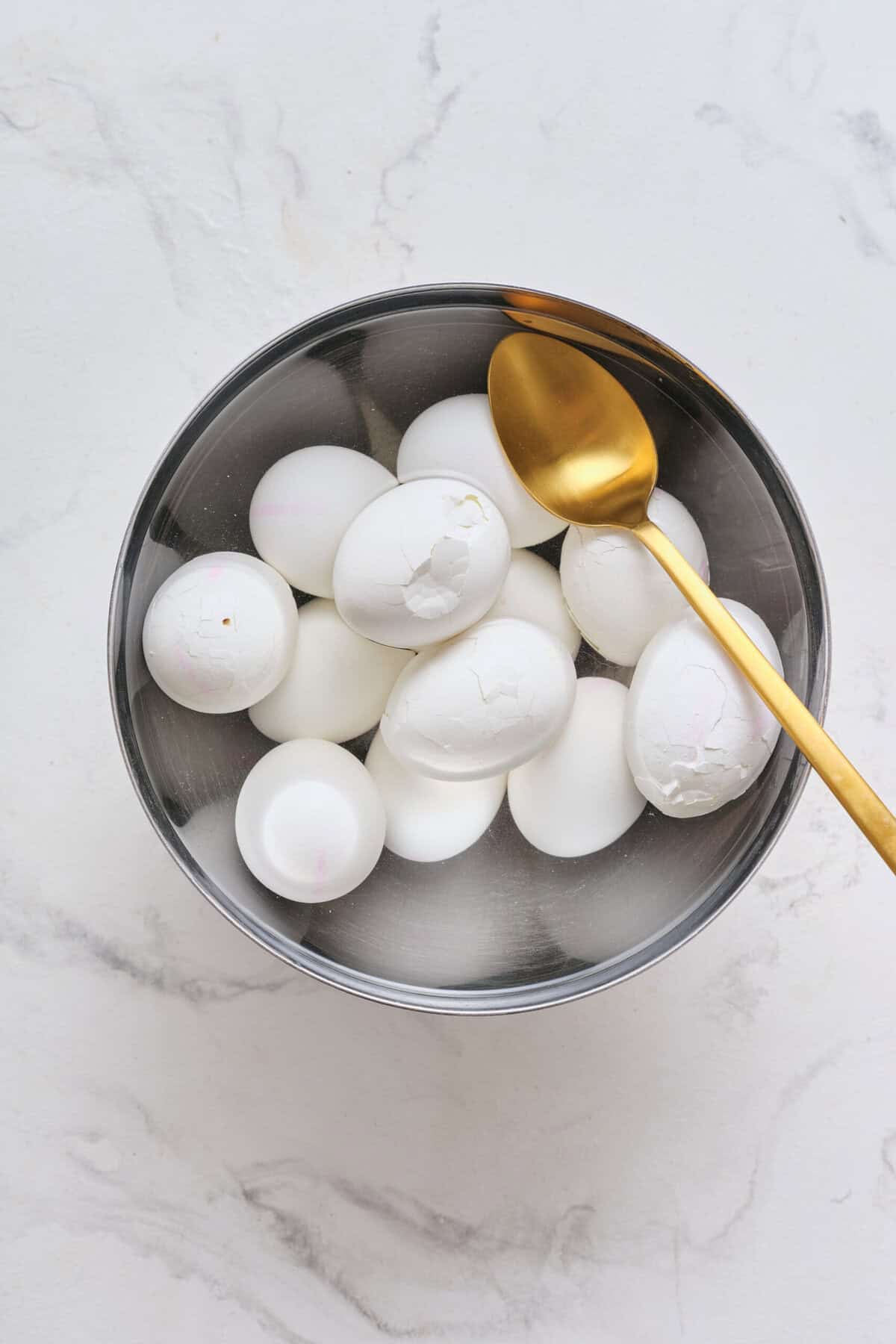
- Place cracked eggs in a container and pour cooled marinade over to fully submerge. Refrigerate for at least 24 hours to develop flavors. Peel before serving.
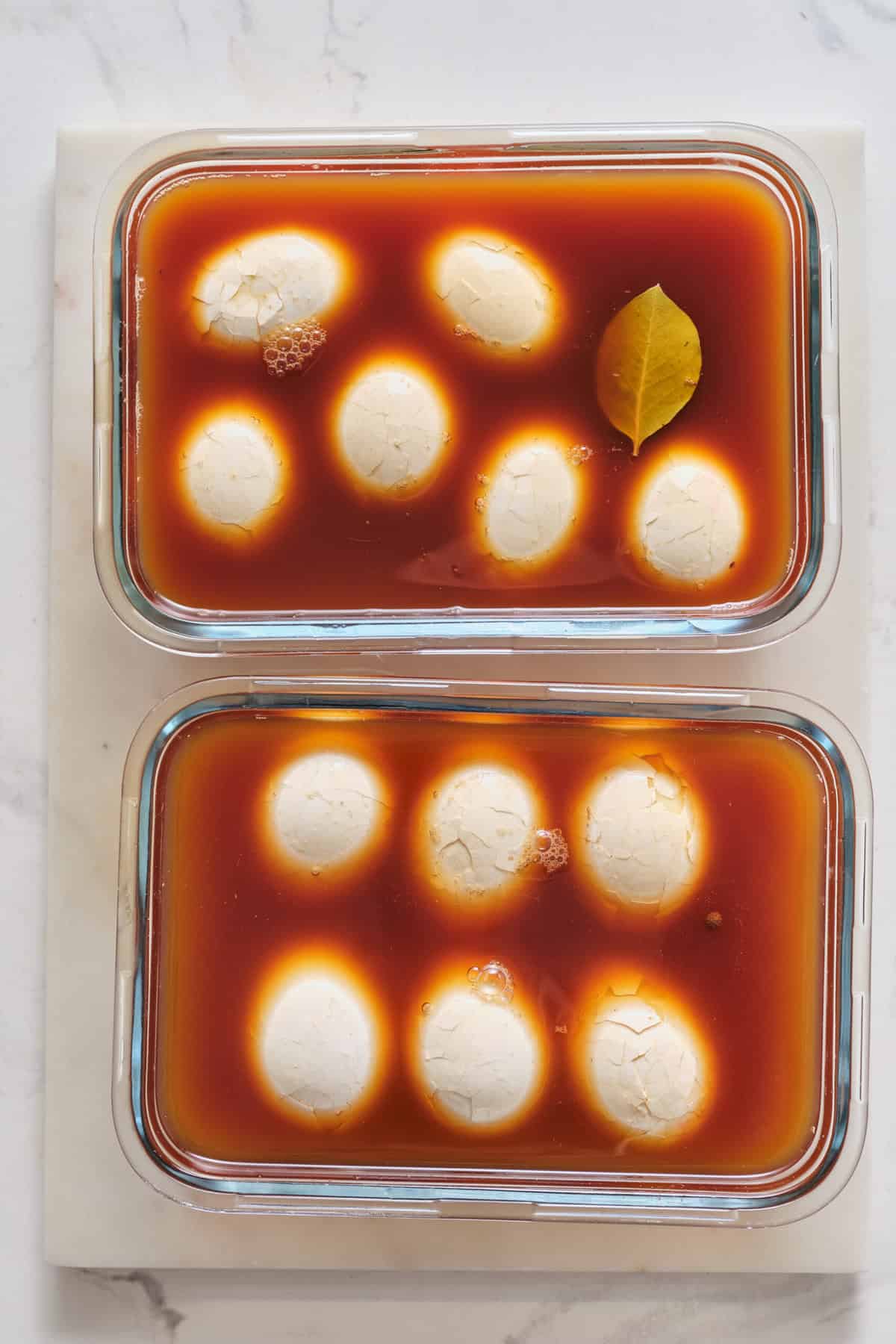
Nutrition Info:
Recipes written and produced on Food Faith Fitness are for informational purposes only.
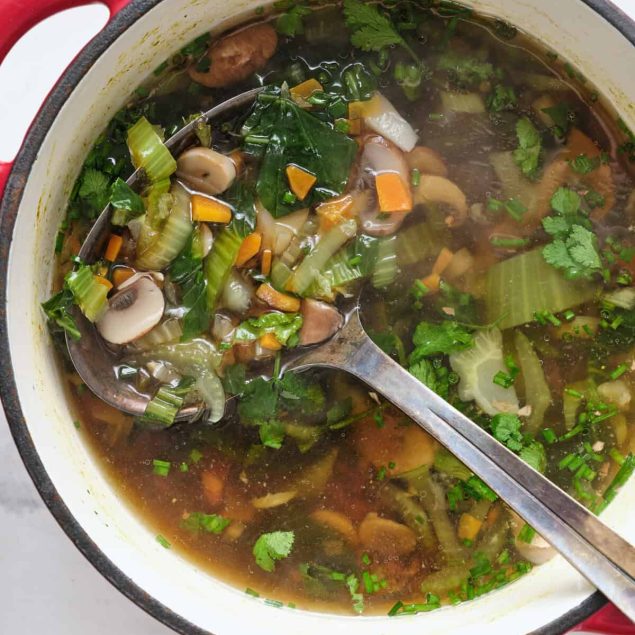
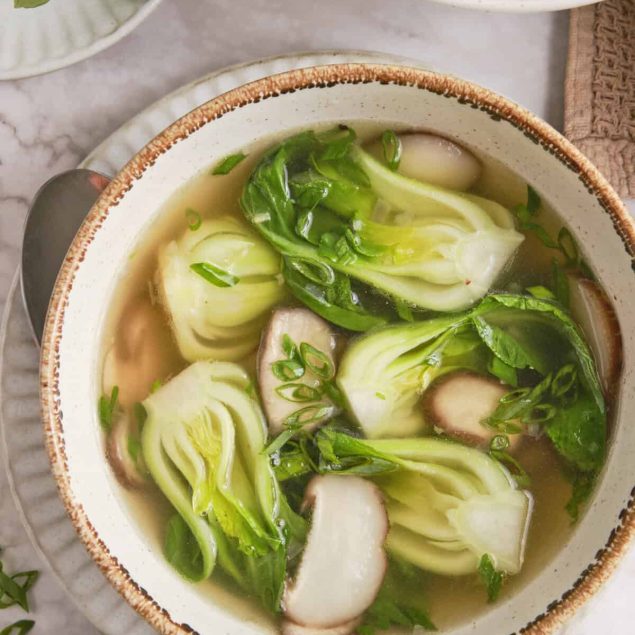
Leave a Comment